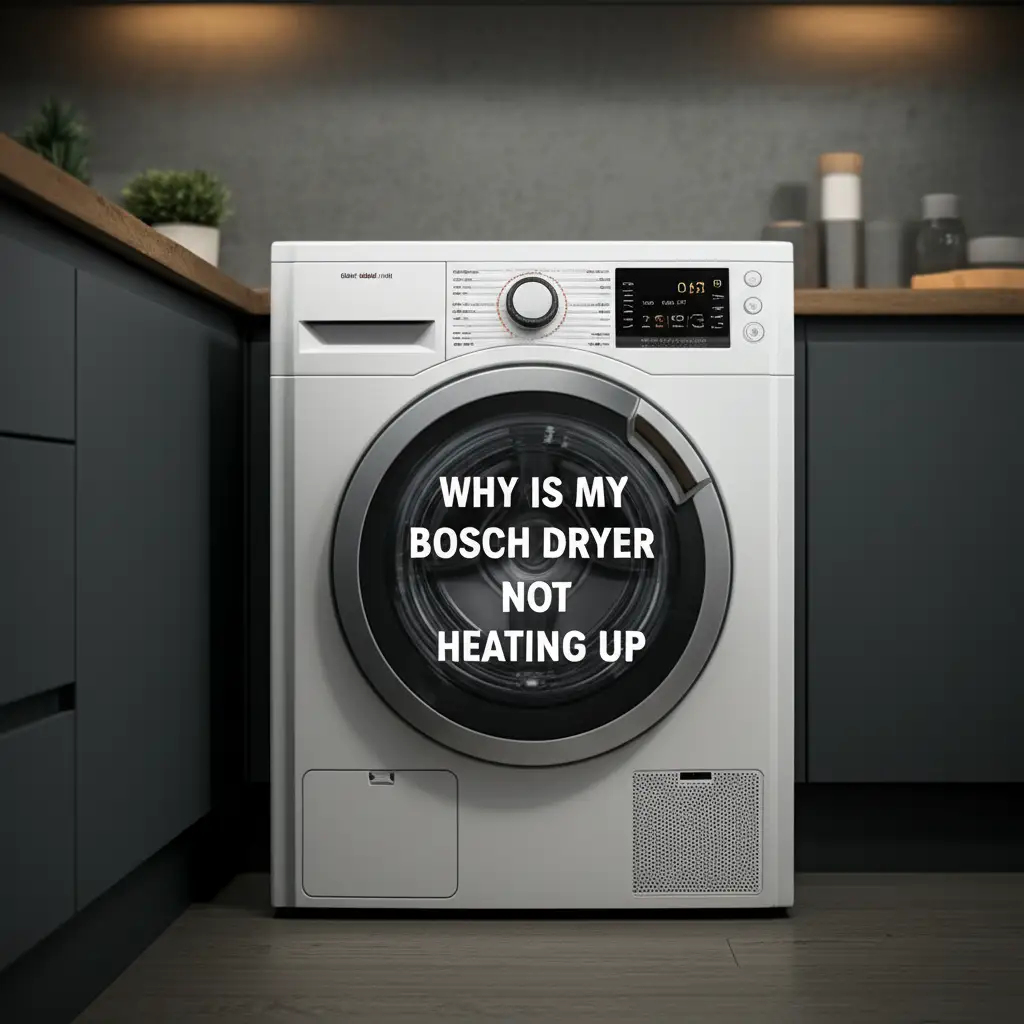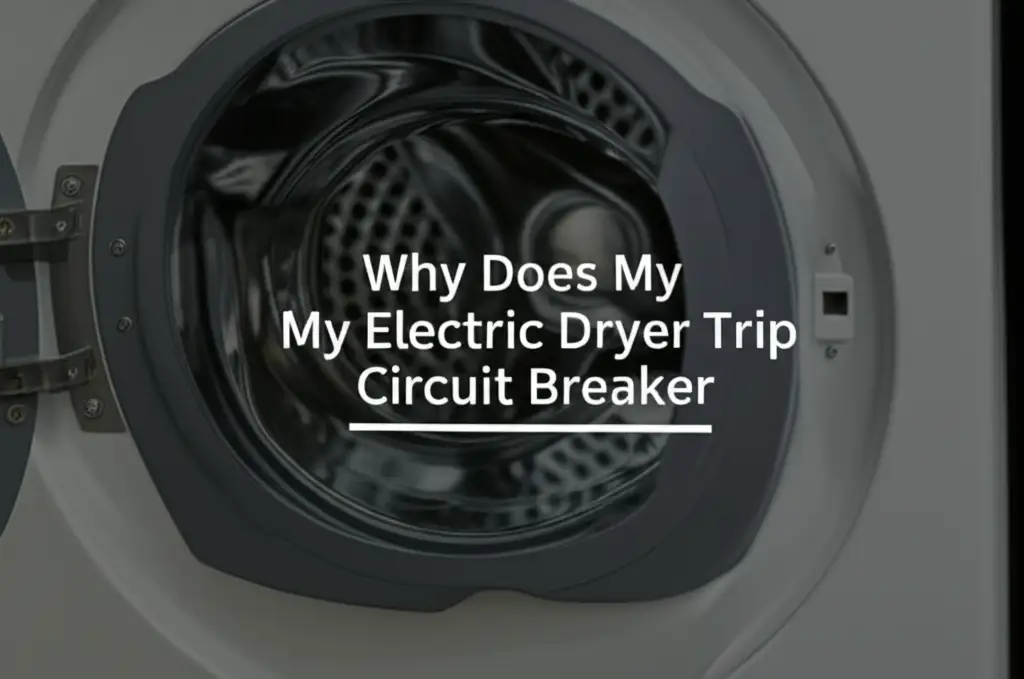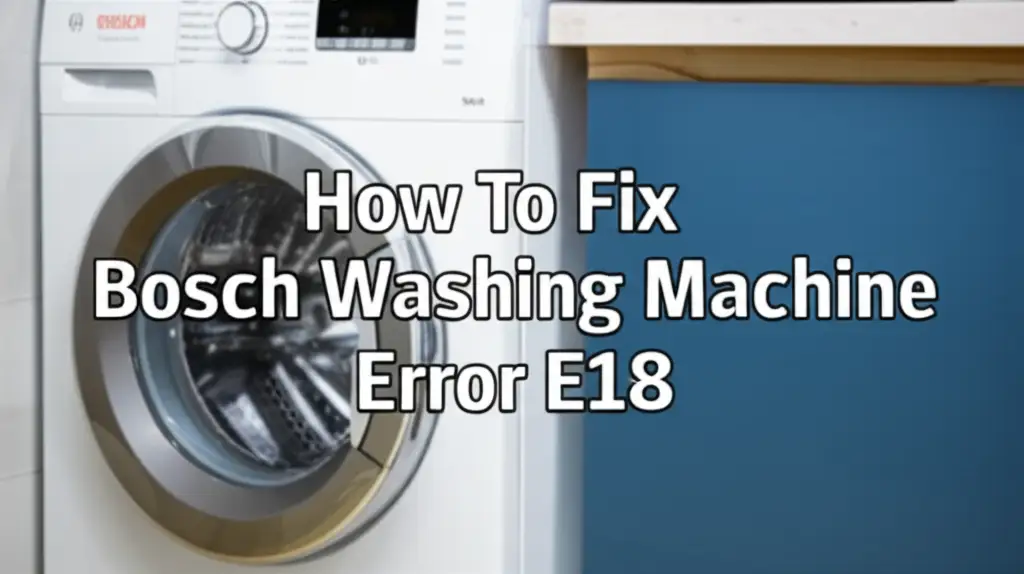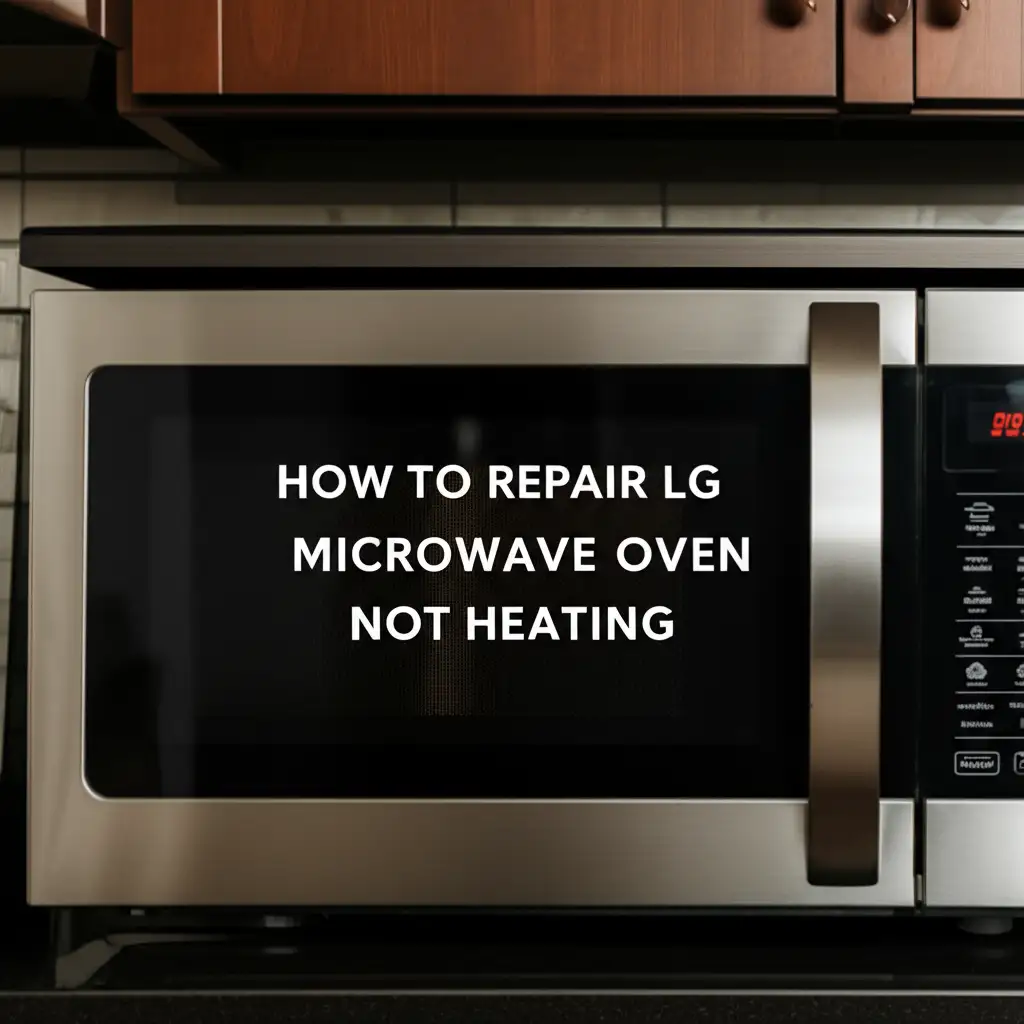· Katria Melrose · Home Appliances · 16 min read
Why Is My Bosch Dryer Not Heating Up

Why Is My Bosch Dryer Not Heating Up? Solutions for No Heat
There is nothing quite as frustrating as pulling laundry from your dryer, expecting warm, dry clothes, only to find them still damp and cold. When your Bosch dryer is not heating up, it can disrupt your entire laundry routine. This common issue affects many appliance owners. You bought a Bosch for its reliability, so a no-heat problem can be confusing.
I know how annoying this situation can be. I have faced similar issues with my own appliances. This article explains the most common reasons why your Bosch dryer stops heating. We will explore everything from simple airflow blockages to more complex electrical component failures. By the end, you will understand the potential causes. You will also learn practical steps to diagnose and possibly fix the problem yourself. Let us get your Bosch dryer back to its drying best.
Takeaway
- Check Power and Breaker: Confirm proper electrical supply to your dryer.
- Clean Lint Filter and Vent: Ensure clear airflow for efficient heating.
- Inspect Thermal Fuse/Thermostat: Look for blown safety components that cut off heat.
- Test Heating Element: Verify the heating coil is intact and functioning.
- Examine Sensors: Clean or replace faulty moisture or temperature sensors.
- Consider Professional Help: Seek expert assistance for complex electrical or component issues.
A Bosch dryer not heating up usually results from a tripped circuit breaker, a clogged lint filter or vent, a faulty thermal fuse, a broken heating element, or a malfunctioning thermostat. Identifying the specific component is key to fixing the problem and restoring the dryer’s heating function.
Understanding Common Causes for Bosch Dryer No Heat Issues
When your Bosch dryer stops producing heat, several factors could be at play. It is helpful to understand the main categories of issues. These include problems with the power supply, airflow restrictions, and failures of specific internal components. Knowing these categories helps in systematic troubleshooting. This ensures you check the most common culprits first.
Many times, a no-heat situation is a safety measure. Dryers are designed with various safety components that cut off heat if certain conditions are not met. This prevents overheating and potential fire hazards. So, while it is inconvenient, it is often the dryer protecting itself and your home. My goal is to help you pinpoint exactly what triggered this safety response. We can then address the root cause directly.
Your Bosch dryer requires three main things to heat effectively: adequate power, unrestricted airflow, and working heating components. If any of these are compromised, the dryer will run but will not heat. We will start with the simplest checks and move to more complex ones. This approach saves time and effort. It also helps you avoid unnecessary part replacements. We will tackle each potential issue step by step.
Checking Power Supply and Circuit Breaker
Electrical issues are often the first place to look when your Bosch dryer is not heating up. Dryers, especially electric models, require a significant amount of power. They typically operate on a 240-volt circuit. This is different from the standard 120-volt outlets used by most household appliances. If the dryer is not getting enough power, it cannot generate heat, even if the drum spins.
The first step is to check your home’s electrical panel. Look for a tripped circuit breaker. A tripped breaker will usually be in the “off” position or somewhere in between “on” and “off.” To reset it, firmly push the breaker all the way to the “off” position, then push it back to the “on” position. If your dryer is electric, it will likely have two breakers linked together. Both must be reset. If the breaker trips again immediately or soon after, there might be a more serious electrical issue. In such cases, contact a qualified electrician.
Also, confirm that the power cord is securely plugged into the wall outlet. A loose connection can prevent proper voltage delivery. While rare, an issue with the wall outlet itself or the dryer’s power cord can also be responsible. You might need to test the outlet with a voltage tester if you suspect this. If you are unsure about checking electrical components, it is always safer to call a professional. Ensuring your dryer has a stable and correct power supply is fundamental to its heating operation.
The Clogged Lint Filter and Vent System
A clogged lint filter or dryer vent system is a very common reason why your Bosch dryer is not heating up. This issue severely restricts airflow through the dryer. When airflow is blocked, the hot air cannot circulate properly to dry the clothes. It also causes the dryer to overheat. To prevent damage or fire, safety components like the thermal fuse will trip. This shuts off the heating element.
I always recommend cleaning the lint filter after every single load. This simple habit prevents a lot of problems. The lint filter is usually located inside the dryer door opening. Pull it out and remove all accumulated lint. You can also wash the lint filter occasionally with soap and water to remove softener residue, which can build up and reduce airflow.
Beyond the lint filter, the dryer vent hose and the external vent cap can become clogged. This happens over time with lint buildup. Disconnect the dryer from the wall and pull it out. Detach the vent hose from the back of the dryer and the wall. Use a long brush or a vacuum cleaner with an attachment to remove all lint from inside the hose and the dryer’s exhaust port. Also, check the outside vent cap on your home’s exterior. Make sure it opens and closes freely and is not blocked by lint or debris. A clean vent system is crucial for efficient drying and preventing overheating issues. For more detailed instructions on keeping your appliance pristine, consider reading about how to clean your dryer. This simple maintenance can prevent many heating problems and also ensure your dryer does not take too long to dry.
Faulty Thermal Fuse or Thermostat
The thermal fuse and thermostats are vital safety components in your Bosch dryer. Their job is to protect the dryer from overheating. If the temperature inside the dryer gets too high, these components will trip or blow. This cuts off power to the heating element, preventing fire hazards. Once a thermal fuse blows, it must be replaced; it is not resettable. Thermostats, on the other hand, can sometimes reset themselves once the dryer cools, but if they are faulty, they will continue to trip.
The thermal fuse is typically a small, non-resettable safety device located near the heating element or the blower housing. Its purpose is to blow if the dryer overheats, often due to restricted airflow from a clogged vent. If your Bosch dryer runs but does not heat, and you have already checked the lint filter and vent, the thermal fuse is a prime suspect. To test it, you need a multimeter. A working fuse will show continuity. If it shows no continuity, it is blown and needs replacement.
Thermostats regulate the dryer’s temperature. There are usually several thermostats in a dryer: an operating thermostat, a high-limit thermostat, and sometimes a cycling thermostat. The high-limit thermostat is another safety device that opens the circuit if the temperature exceeds a safe level. A faulty high-limit thermostat can cause your dryer to stop heating. You can test thermostats for continuity with a multimeter as well. Always disconnect power to the dryer before attempting any checks on these components. Replacing a faulty thermal fuse or thermostat can often resolve the “no heat” issue.
Troubleshooting the Heating Element
The heating element is arguably the most critical component when your Bosch dryer is not heating up. This part is responsible for generating the actual heat. It is essentially a coil of wire that heats up when electricity passes through it. Over time, these coils can break or burn out, preventing the dryer from getting hot. If your dryer runs but produces no warm air, a faulty heating element is a very strong possibility.
Accessing the heating element usually involves removing the back or front panel of your Bosch dryer. The element itself looks like a coiled wire inside a metal housing. Before touching anything, always ensure the dryer is unplugged from the wall outlet. Safety is paramount when working with electrical components. Once you can see the heating element, visually inspect the coils. Look for any breaks, burnt spots, or signs of damage. Even a small break in the coil can prevent it from heating.
To confirm if the heating element is truly faulty, you will need a multimeter. Set the multimeter to measure resistance (ohms). Place one probe on each terminal of the heating element. A good heating element will show a specific resistance reading, typically between 8 to 25 ohms, depending on the model. If your multimeter reads “OL” (open circuit) or infinity, it means the coil is broken, and the element needs to be replaced. Replacing the heating element is a common repair and can often be done by a DIY enthusiast with the right tools. If you have a Bosch heat pump dryer, the issue might be different, as detailed in articles like Why Does My Bosch Heat Pump Dryer Not Dry.
Examining the Thermistor or Moisture Sensor
Modern Bosch dryers, especially heat pump or condenser models, rely heavily on sensors for efficient operation. Two key sensors that can impact heating are the thermistor and the moisture sensor. A faulty thermistor or a dirty moisture sensor can lead your Bosch dryer to believe clothes are dry or that the temperature is higher than it actually is. This can prevent the heating element from activating or cause cycles to end prematurely.
The thermistor is a temperature sensor. It constantly monitors the air temperature within the dryer drum or exhaust duct. It sends this information to the control board. If the thermistor is faulty, it might send incorrect temperature readings. For instance, it might signal that the dryer is already hot when it is not. In response, the control board will not energize the heating element. You can test a thermistor’s resistance with a multimeter; its resistance changes with temperature. Consult your dryer’s service manual for the correct resistance values at various temperatures.
Moisture sensors detect the dampness of the clothes. They consist of two metal bars located inside the dryer drum, usually near the lint filter. As clothes tumble, they make contact with these bars. When clothes are wet, they conduct electricity between the bars. When they are dry, they do not. If these sensors are covered in lint, fabric softener residue, or dirt, they might incorrectly sense that clothes are dry. This will prematurely end the drying cycle or prevent the dryer from heating adequately. Regularly cleaning these sensors with a damp cloth or rubbing alcohol is a good maintenance practice. If you need more specific instructions, you might find help in guides such as how to clean Bosch dryer moisture sensor.
Motor Issues and Belt Problems
While the motor and drive belt do not directly generate heat, their proper functioning is essential for the dryer’s overall operation and thus, indirectly, its heating capabilities. If the motor is not running efficiently, or if the drive belt is broken or worn, it can lead to various problems, including inadequate heating or the dryer stopping mid-cycle. The motor powers the drum’s rotation and often also the blower fan. The blower fan pulls air through the heating element and pushes it through the drum and out the vent.
If the drive belt is broken, the drum will not spin, or it will spin very slowly. This means clothes will not tumble properly, and hot air will not circulate evenly, leading to poor drying and potentially no heating. Many dryers have a safety switch connected to the belt. If the belt breaks, this switch opens, cutting power to the entire dryer, including the heating element and motor. You can usually check the drive belt by rotating the drum by hand. If it spins too freely or makes a thumping sound, the belt might be broken or loose.
A struggling or faulty motor can also indirectly affect heating. If the motor is weak, it might not properly drive the blower fan, leading to reduced airflow. As discussed, restricted airflow causes overheating and triggers safety cutoffs like the thermal fuse. If the motor runs loudly, hums but does not start, or stops unexpectedly, it could be the culprit. Replacing a drive belt is a relatively straightforward DIY repair for most dryer models. However, diagnosing and replacing a motor is more complex and might require professional assistance.
Control Board Malfunctions
The control board acts as the brain of your Bosch dryer. It receives signals from sensors, interprets user selections, and sends commands to various components, including the heating element. If the control board is faulty, it might not correctly send the signal to activate the heating element, even if all other components are in working order. This can be a frustrating issue because the dryer may appear to function normally in every other aspect—the drum spins, the lights work, but there is simply no heat.
Diagnosing a faulty control board can be challenging for the average homeowner. There are usually no obvious visual signs of damage, such as burnt marks, unless a component on the board has shorted out. A control board malfunction might manifest as intermittent heating, incorrect cycle times, or the dryer not responding to commands. Before suspecting the control board, it is crucial to rule out all other more common issues like power supply, clogged vents, and faulty thermal fuses, thermostats, or heating elements. These simpler problems are far more frequent causes of no-heat issues.
Replacing a control board is often an expensive repair. It involves carefully disconnecting multiple wires and securing the new board. Due to the complexity and cost, I recommend a professional technician diagnose a control board issue. They have specialized diagnostic tools and expertise to confirm if the board is indeed the problem. Sometimes, what seems like a control board issue might be a wiring harness problem leading to the board. It is best to have an expert confirm this before you invest in a new part.
When to Call a Professional for Bosch Dryer Repair
While many dryer issues can be resolved with DIY troubleshooting, there are times when calling a professional technician is the smartest and safest course of action. If you have gone through all the common checks—power, vents, thermal fuse, heating element, and sensors—and your Bosch dryer is still not heating up, it is likely time to seek expert help. Complex electrical problems, motor malfunctions, or control board failures often require specialized tools and diagnostic knowledge that goes beyond basic homeowner repairs.
Safety is the top priority when dealing with appliances. Working with electricity can be dangerous if you are not experienced. If you feel uncomfortable at any point during the troubleshooting process, or if you are unsure about testing a component, stop immediately and contact a professional. An untrained attempt to fix a complex issue could lead to further damage to the dryer or, worse, personal injury. Electrical components can deliver a powerful shock even when the appliance is unplugged if capacitors retain charge.
A professional technician can quickly and accurately diagnose the problem. They have access to specific Bosch diagnostic codes, specialized equipment, and genuine replacement parts. While there is a cost associated with professional repair, it can save you time, frustration, and potentially more money in the long run if you avoid misdiagnosing the issue and replacing parts unnecessarily. If your dryer is still under warranty, calling an authorized Bosch service technician is definitely the way to go, as DIY repairs might void the warranty. They can also advise if the cost of repair outweighs the cost of replacing the dryer, especially for older models.
FAQ Section
How do I reset my Bosch dryer’s heating element?
You cannot directly reset a heating element. If your Bosch dryer is not heating, it is often due to a tripped thermal fuse or high-limit thermostat. These safety devices cut power to the heating element. To reset, first identify and fix the underlying cause like a clogged vent. Then, reset the circuit breaker. A blown thermal fuse needs replacement, not a reset.
Can a dirty lint trap cause my Bosch dryer not to heat?
Yes, absolutely. A dirty lint trap is one of the most common reasons a Bosch dryer stops heating. Lint buildup restricts airflow, causing the dryer to overheat. When the dryer overheats, safety components like the thermal fuse trip. This cuts power to the heating element to prevent fire. Cleaning the lint trap after every load is vital.
What is a thermal fuse and how does it affect heating?
A thermal fuse is a small, one-time safety device in your dryer. It blows if the dryer’s internal temperature exceeds a safe limit, often due to poor airflow. When it blows, it permanently cuts power to the heating element. This prevents overheating and fire. A blown thermal fuse must be replaced for the dryer to heat again.
How often should I clean my dryer vent?
You should clean your dryer vent system at least once a year, or more frequently if you use your dryer heavily. Lint builds up in the vent hose and external vent cap over time. This reduces airflow and can cause the dryer to overheat, leading to no-heat issues or fire hazards. Regular cleaning ensures efficient and safe operation.
Is it safe to use a dryer that isn’t heating up?
Using a dryer that isn’t heating up is generally safe in terms of immediate danger. However, it is not efficient and serves no purpose for drying clothes. The main concern is diagnosing why it is not heating. If the no-heat issue is due to a clogged vent or faulty safety components, continued use could lead to further damage or, in severe cases, a fire hazard if the underlying cause isn’t fixed.
Can a Bosch heat pump dryer have the same heating issues?
Bosch heat pump dryers operate differently from traditional electric dryers. While they also rely on internal components for heating, their “no heat” issues are often related to the sealed refrigeration system, refrigerant levels, or compressor problems, rather than a simple heating element. Airflow issues can still affect them. These require specialized repair by a technician.
Conclusion
Finding your Bosch dryer not heating up can be incredibly frustrating. However, many common causes are surprisingly simple to diagnose and fix. We have explored the most frequent culprits, from simple power supply checks and clogged lint filters to more involved issues like faulty thermal fuses, thermostats, and heating elements. By systematically working through these potential problems, you can often restore your dryer’s heating function yourself.
Remember, the key steps involve ensuring proper power, maintaining clear airflow, and checking crucial safety and heating components. Your Bosch dryer’s no-heat problem is often a sign of a safety mechanism at work. Addressing the root cause ensures both effective drying and safe operation. If you have followed these troubleshooting steps and your Bosch dryer still refuses to heat, do not hesitate to contact a qualified appliance technician. They possess the expertise and tools needed for more complex diagnoses and repairs. With a little effort, you can get your laundry routine back on track, enjoying warm, perfectly dry clothes once again.





